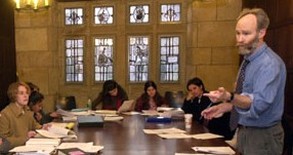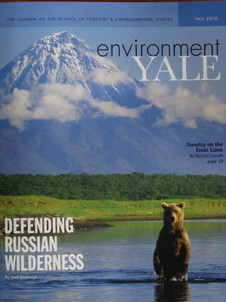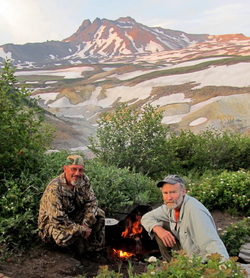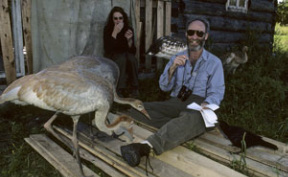Teaching Nonfiction Writing at Yale

Mendell Room in Branford College at Yale
(photo by Michael Marsland)
TEACHING LINKS
I've written for publications including Atlantic, Audubon, BBC, New Republic, Reader's Digest, Russian Life, Sierra, Smithsonian, the New York Times Magazine, the books division of the National Geographic Society, and also the op-ed pages of Christian Science Monitor, Newsday, and the New York Times. I also have the great pleasure of teaching nonfiction writing at Yale, in both the Department of English and the Yale School of Forestry & Environmental Studies. For more information, click on link above for Teaching.
Writing nonfiction: reporting in Russia, China, the United States, and elsewhere

Kronotsky Zapovednik (cover photo Igor Shpilenok)
My most recent reporting, including "Lenin's Eco-Warriors" in New York Times, 8/7/2017, has focused on the work of environmentalists in Russia, fighting on behalf of splendid lands in the world's largest nation, one with a proud but little-known history of protecting pristine landscapes against great challenges, throughout the past century and continuing today.
In the photograph below right, taken while reporting articles on Russia's nature
reserves (zapovedniki or заповедники) for Sierra and Smithsonian magazines, the
young cranes in the left foreground, trying to untie the laces of my boots, are
red-crowned cranes (grus japonicus). The young cranes in the right background
are white-naped cranes (grus vipio), also called Daurian cranes. These crane
chicks are recent additions to two of the rarest species of birds on earth.
In the photograph below right, taken while reporting articles on Russia's nature
reserves (zapovedniki or заповедники) for Sierra and Smithsonian magazines, the
young cranes in the left foreground, trying to untie the laces of my boots, are
red-crowned cranes (grus japonicus). The young cranes in the right background
are white-naped cranes (grus vipio), also called Daurian cranes. These crane
chicks are recent additions to two of the rarest species of birds on earth.
 Volcanic highlands of Kamchatka Volcanic highlands of Kamchatka
Evgeny Vlasov (at left in photo at left) began working as a ranger in Kronotsky Zapovednik three decades ago. We've stopped for the night after hiking through volcanic highlands leading from Kamchatka's Valley of the Geysers to its so-called Death Valley, visible behind us beneath the 1400-years-young cone of still-fuming Savich Volcano. Click here for my article,
"Hiking Russia’s Geyser Valley," BBC Travel, February 2014. |
 Khingan Nature Reserve, reporting on wildlife
The Russian field scientists at Khingan Nature Reserve where the photo at right was taken, in Siberia just north of the Amur River (the border with China), are breeding these cranes for release into the wild. The crow tugging on my notebook at right is not endangered as a
species. Click here to read this article in English or here to read this article in Russian (Русская версия). (Both Russia photos above right by Igor Shpilenok www.Shpilenok.ru.) |